JMK
Active member
Hi GDIY.
About 3 years ago i build this thing, the HF boost PEC pot went to hell, and i found out the old toroid inductor had a bad core, so while im waiting for the new inductor i did some measurements of volts, and amps in the system.
Sorry little noobish question maybe but is this correct?
When i measured the amps i took a DMM in series with the cathode on the 6X4 to the 470 ohm resistor.
I measured the volts about the 3 years ago, the old measurements were closer to the values on the original schematic.
I know the values are very close now, but im curious if this voltage change could be caused by the rectifier tube?
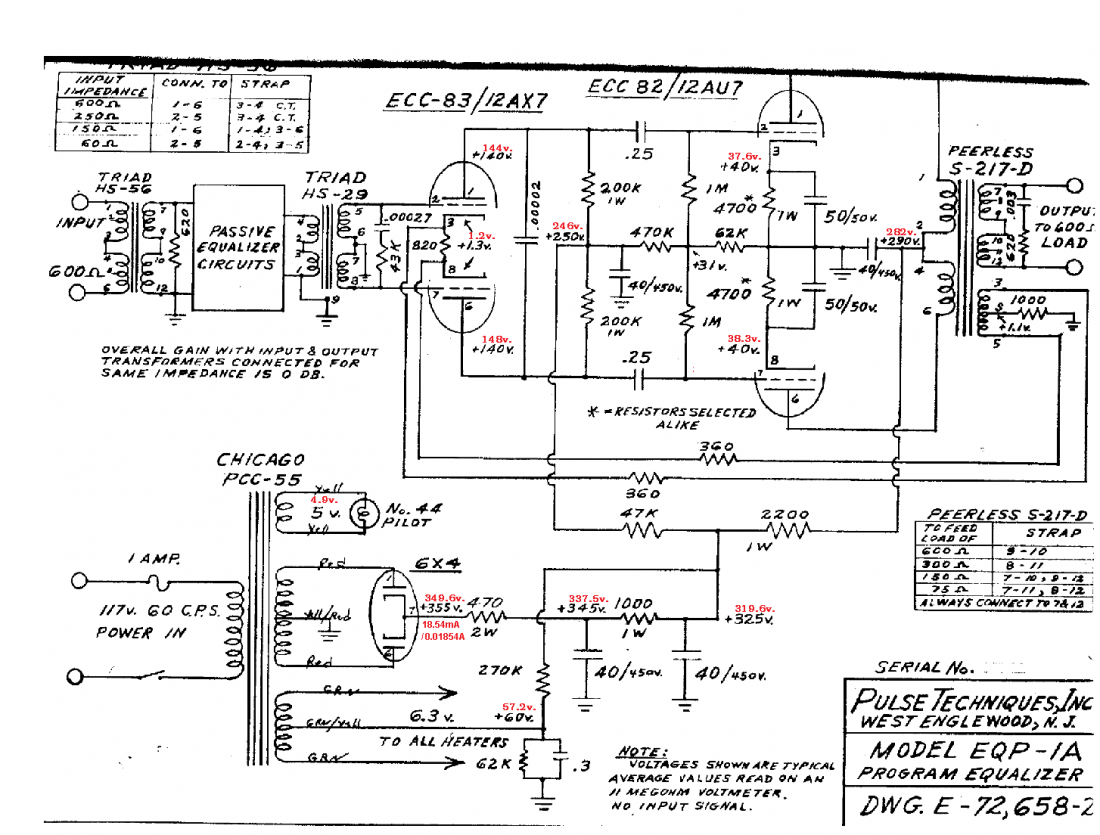
Voltage on power-transformer and tubes.
6X4
Pin 1 = 298.7 VAC
Pin 2 = 2.7 VAC
Pin 3 = 57.3 VDC
Pin 4 = 57.3 VDC
Pin 5 = 2.5 VAC
Pin 6 = 299.7 VAC
12AX7
Pin 1 = 144.8 VDC
Pin 2 = 0.0 VDC
Pin 3 = 1.2 VDC
Pin 4 = 56.6 VDC
Pin 5 = 56.6 VDC
Pin 6 = 148.6 VDC
Pin 7 = 0.0 VDC
Pin 8 = 1.2 VDC
Pin 9 = 56.5 VDC
12AU7
Pin 1 = 277.2 VDC
Pin 2 = 26.5 VDC
Pin 3 = 37.6 VDC
Pin 4 = 56.4 VDC
Pin 5 = 56.4 VDC
Pin 6 = 276.6 VDC
Pin 7 = 26.3 VDC
Pin 8 = 38.3 VDC
Pin 9 = 56.4 VDC
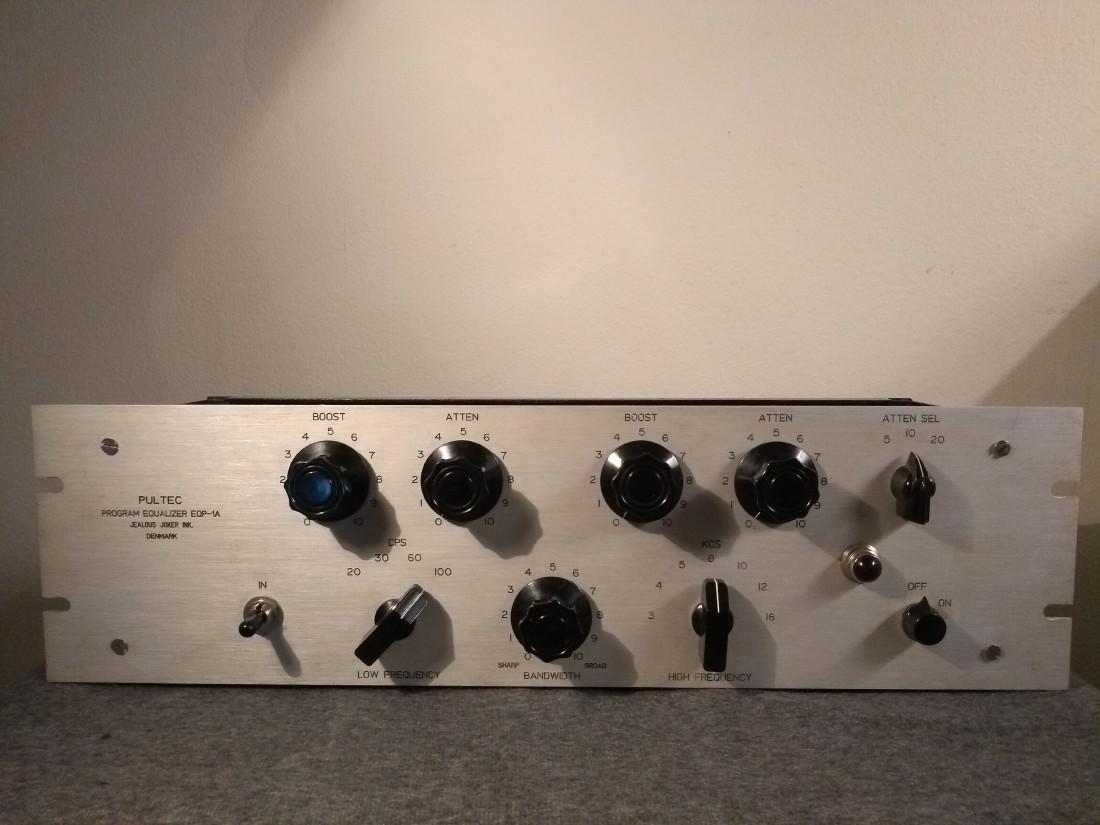
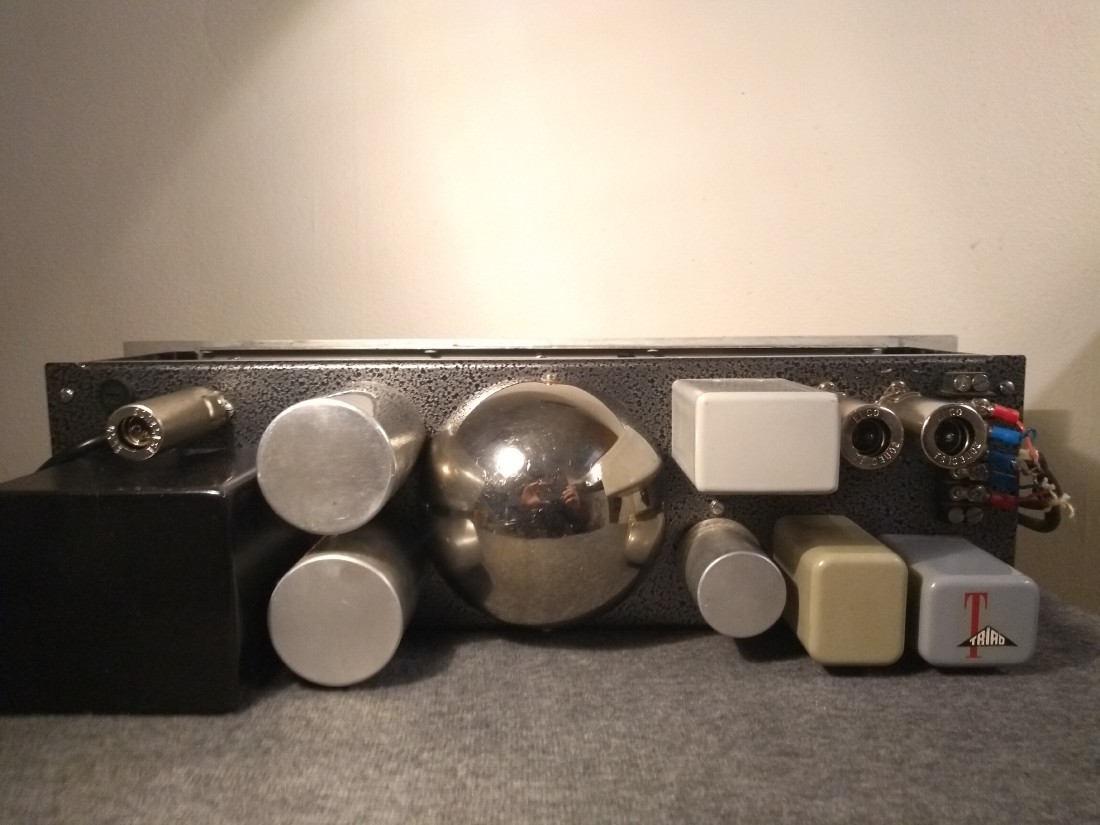
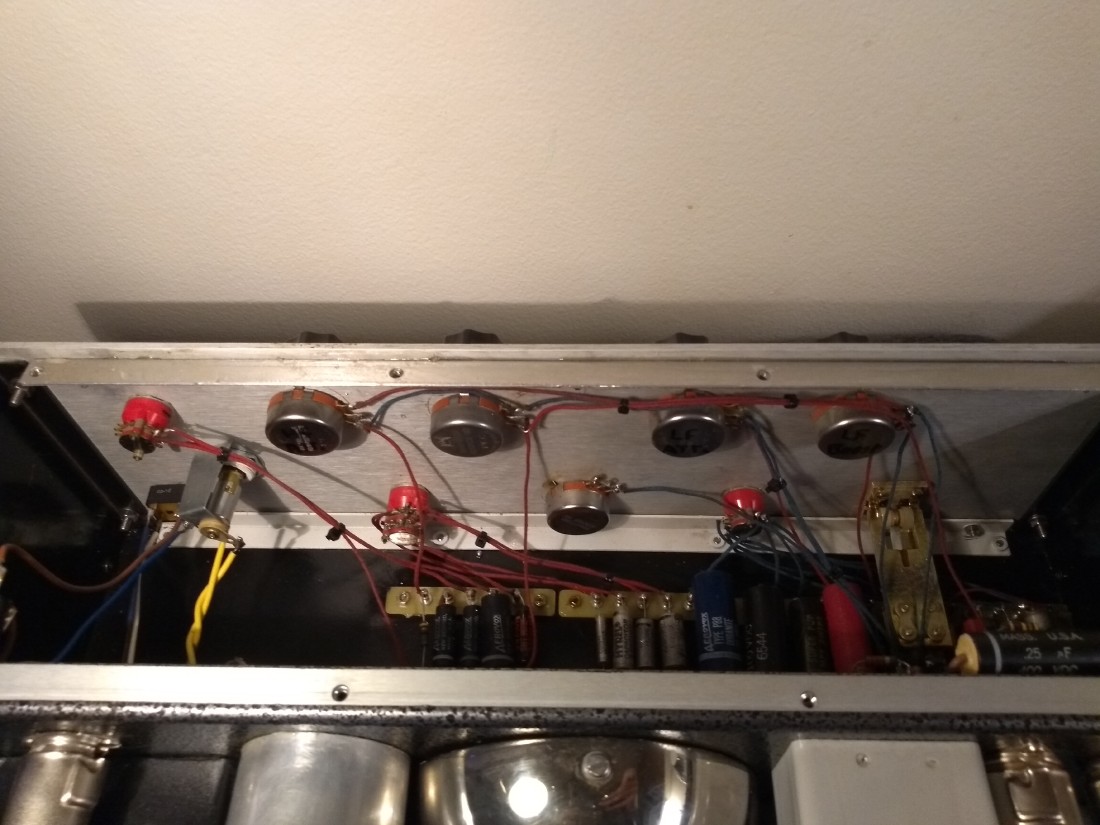
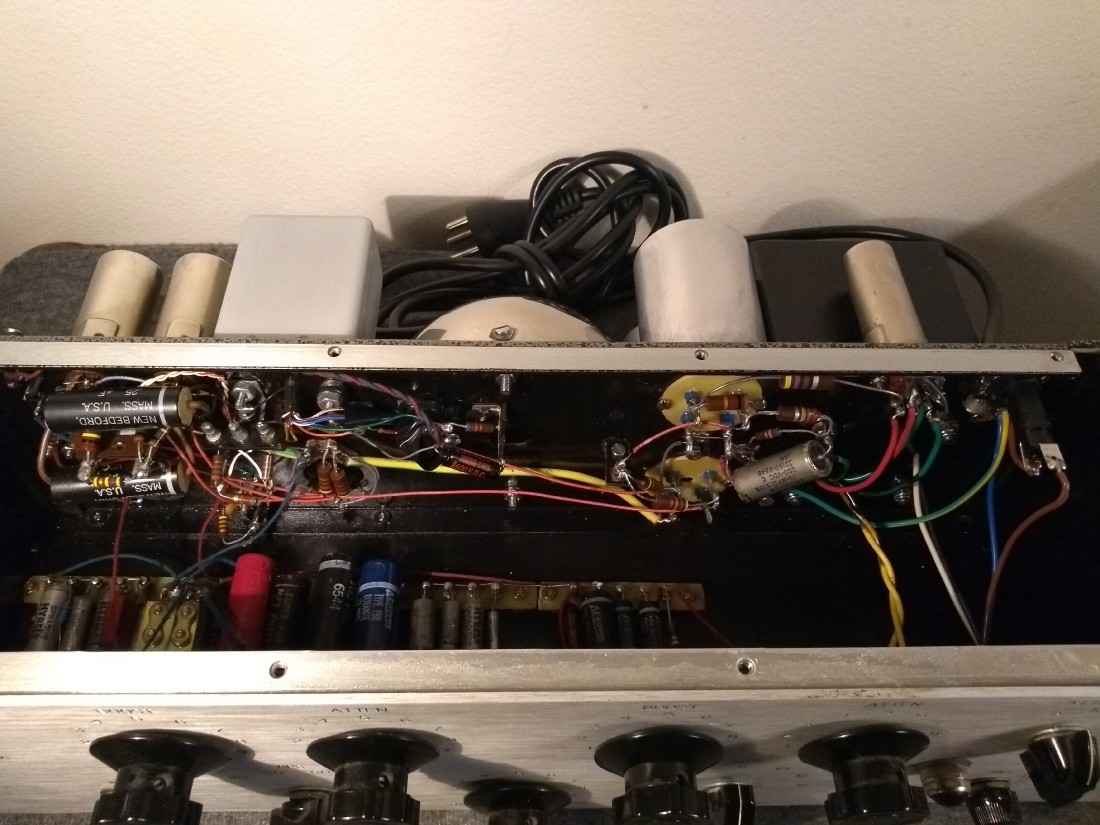

About 3 years ago i build this thing, the HF boost PEC pot went to hell, and i found out the old toroid inductor had a bad core, so while im waiting for the new inductor i did some measurements of volts, and amps in the system.
Sorry little noobish question maybe but is this correct?
When i measured the amps i took a DMM in series with the cathode on the 6X4 to the 470 ohm resistor.
I measured the volts about the 3 years ago, the old measurements were closer to the values on the original schematic.
I know the values are very close now, but im curious if this voltage change could be caused by the rectifier tube?

Voltage on power-transformer and tubes.
6X4
Pin 1 = 298.7 VAC
Pin 2 = 2.7 VAC
Pin 3 = 57.3 VDC
Pin 4 = 57.3 VDC
Pin 5 = 2.5 VAC
Pin 6 = 299.7 VAC
12AX7
Pin 1 = 144.8 VDC
Pin 2 = 0.0 VDC
Pin 3 = 1.2 VDC
Pin 4 = 56.6 VDC
Pin 5 = 56.6 VDC
Pin 6 = 148.6 VDC
Pin 7 = 0.0 VDC
Pin 8 = 1.2 VDC
Pin 9 = 56.5 VDC
12AU7
Pin 1 = 277.2 VDC
Pin 2 = 26.5 VDC
Pin 3 = 37.6 VDC
Pin 4 = 56.4 VDC
Pin 5 = 56.4 VDC
Pin 6 = 276.6 VDC
Pin 7 = 26.3 VDC
Pin 8 = 38.3 VDC
Pin 9 = 56.4 VDC




























![Electronics Soldering Iron Kit, [Upgraded] Soldering Iron 110V 90W LCD Digital Portable Soldering Kit 180-480℃(356-896℉), Welding Tool with ON/OFF Switch, Auto-sleep, Thermostatic Design](https://m.media-amazon.com/images/I/41gRDnlyfJS._SL500_.jpg)








